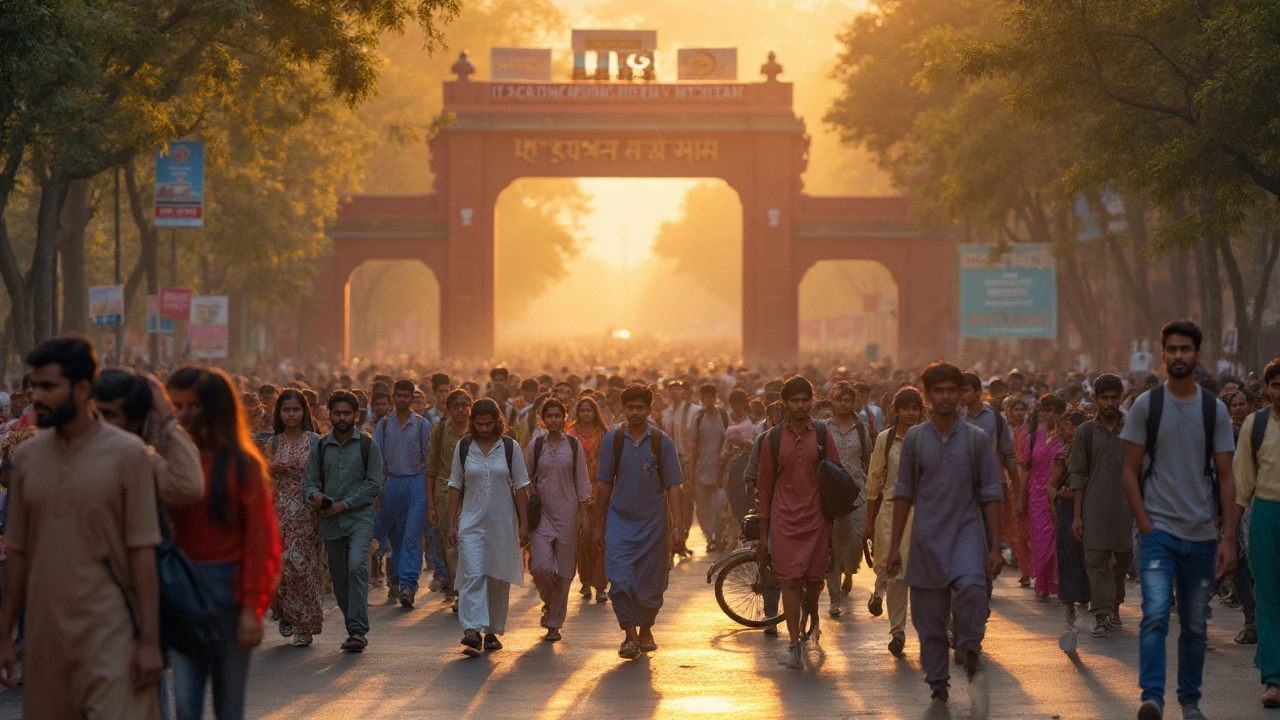Cracking the entry gates of the Indian Institutes of Technology (IIT) or nailing a spot at Harvard—both sound like impossible dreams. But here’s where things get interesting: data often shows it’s actually way tougher to get into IIT than Harvard. We’re talking about an acceptance rate for IIT that can make Harvard’s numbers look generous. And it’s not only about getting in. The grind that comes next is legendary in both places, but each has its own style of making you sweat. If you’ve ever wondered which is truly harder—and what really goes on behind those famous walls—let’s get brutally honest.
Hard Numbers: Admission Odds You Can’t Ignore
Let’s kick things off with what most people care about: just how tiny a shot do you have at getting into either place? Most realize it’s tough, but don’t really know HOW tough. Here’s a fact: in 2024, Harvard had an admission rate of around 3.6%. That’s insane, right? Then you see the IITs—where the Joint Entrance Exam (IIT JEE) is the almighty gatekeeper. About 1.2 million students registered for JEE Main in 2024. Out of them, just 200,000 qualified for JEE Advanced. Now, the next filter: less than 18,000 actually made it into any of the IITs. Do that math, and you’re looking at a success rate of below 1.5% for those who even made it to the Advanced stage.
| Institute | Applicants (2024) | Offers Made | Acceptance Rate |
|---|---|---|---|
| IITs | 1,200,000 (JEE Main) | 18,000 | 1.5% |
| Harvard | 56,937 | 2,026 | 3.6% |
Look at those odds. Statistically, it’s actually harder to get into the IITs—at least by numbers alone. But what do those numbers really mean for the kids sweating through prep season?
Think about daily life for an IIT JEE aspirant. In many small Indian towns, entire families shift routines so the kid can study—some even send their child across the country to coaching ‘hubs’ like Kota. Kids spend three or four years honing their brains for one exam. For Harvard hopefuls, it’s a different race. You’re expected to be an academic ace, yeah, but you’re also supposed to play three sports, run a club, volunteer, crush the SAT, and just somehow ooze charisma. The Indian grind is mostly academic, while the American one looks for a complete package.
The IIT JEE: The Mother of All Entrance Tests
There’s a reason why IIT JEE keeps cropping up in stories about brutally competitive exams. It’s more than memorizing physics formulas or calculating math problems. The exam is designed to trip you up, test your stamina, and break down your time management. The questions? They’re notoriously tricky—often twisting concepts till only someone who’s truly mastered them stands a chance.
If you land in Kota, Uttar Pradesh, or any coaching city, you’ll see the effects. Every street has coaching billboards. Hostels are packed with teenagers, away from their families since the age of 14 or 15. Their days look like this: wake up, study six hours before lunch, take practice tests, attend coaching, do more homework, sleep, repeat. Holidays? Some haven’t celebrated Diwali or Holi in years.
Tips from those who survived: Don’t chase every book—stick to NCERT first. Past years’ papers are gospel. Schedule short daily revisions. Find a chill, even if just 20 minutes a day, to avoid burning out. And watch out for coaching ‘fatigue’. Kota’s high-pressure environment can break you if you don’t keep your mental health in check. There’s a dark side—reports of burnout and, tragically, even suicides have haunted the IIT entrance ecosystem for years. Parents, keep an open channel with your child. They might sound fine, but check in—seriously.
The filtering continues even after you make it into IIT. The first year often hits hard, because suddenly, you’re surrounded by India’s best, and everyone is used to being at the top. The competitive spirit never sleeps. Some students lose their confidence when grades drop. Those who thrive? They’re usually the ones who don’t tie self-worth to grades alone.

Inside Harvard: More Than Just Grades and Ivy Vibes
Walk into Harvard’s campus and everything seems perfect—red brick buildings, shining faces, and libraries so beautiful you’d want to camp out there. But beneath the glossy exterior, the application process is a beast of its own. Harvard wants brains, sure, but it also wants soul. The perfect Harvard candidate isn’t just scoring a near-perfect SAT. They’re also captain of the soccer team, author of a viral essay in The New York Times, and organizer of a climate march. If you’re from outside the US, like India or China, you need to stand out even more.
The interviews can get intense. Alumni throw curveball questions: “What would you change about the world if you had $1 billion?” No textbook will help if you freeze under pressure. And remember—legacy students (kids with family connections), athletes, and those from underrepresented backgrounds can sometimes get that edge. Unfair? Maybe. Reality? Yes.
Once you get in, the grind doesn’t stop. The courses are tough, the competition is global, and the social stakes are high. Students talk about ‘imposter syndrome’—feeling like you’re out of place among so many high achievers. Deadlines stack up, professors expect you to speak up in class, and you’re suddenly surrounded by future Nobel Prize winners. Some international students end up feeling isolated unless they find support groups.
Here’s something else: Harvard is expensive. Even though a lot of financial aid is available, tuition, housing, and travel put a real strain on families, especially those from outside the US. Tips from Harvard insiders? Apply for every single scholarship. Get support from senior students—they’ll help you navigate faster than any official guide. Build relationships with professors if you want real learning (and killer recommendation letters).
Which Is Harder: The Final Showdown
So if you pit IIT against Harvard, where’s the real test? Pure numbers tell you: IIT is tougher to get into, percentage-wise. The hard science grind of JEE is relentless. There’s also the emotional toll—burnout, the coaching rat race, and families betting everything on a result that might just come down to a silly mistake on the big day.
Harvard, though, requires a different sort of hustle. You need to convince the admissions folks that you’re unique—not just by scores, but by the story you tell and the difference you promise to make. The odds are better, statistically, but the randomness is wild: two nearly identical applicants might get totally different results, just based on some passion for violin or starting a school club.
If you want one key takeaway: neither path is easy. Your background, your learning style, and your goals matter. If you’re obsessed with tech, math, or engineering, the IIT route will push you to your breaking point—and maybe make you a legend. If you want a blend of top academics and broad opportunities—from business to public service to the arts—Harvard is a different but equally exhausting battleground.
Ready to try cracking either? Boning up on past exams, brushing up on your story, and—most important—learning to take care of yourself might be your best bet. Getting in is tough, but making it through and thriving is the real challenge, no matter which campus you end up on. For all its stress, though, either place can change your life—if you let it.
